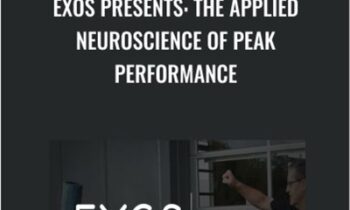$629.00 Original price was: $629.00.$187.00Current price is: $187.00.
Gain practical tools for applying ACT from Dr. Steven C. Hayes through 10 online modules featuring extensive demonstration videos, network diagramming, clinical analysis, treatment planning, reads skills practice, and more.
 Purchase this course you will earn 187 Points worth of $18.70
Purchase this course you will earn 187 Points worth of $18.70Elevate your skills with the ACT in practice 2022 – Steven C.Hayes course, available for just $629.00 Original price was: $629.00.$187.00Current price is: $187.00. on Utralist.com! Browse our curated selection of over 60,000 downloadable digital courses across diverse Health and Medical. Benefit from expert-led, self-paced instruction and save over 80%. Start learning smarter today!
Salepage link: At HERE. Archive: https://archive.ph/wip/nzkuz
Buy now $187 $629, ACT in practice 2022 – Steven C.Hayes Course.
Lifetime Access
Confidently Apply ACT from Intake through Treatment
acceptance and commitment therapy to cultivate lasting change
The Gap between Theory and Practice
- They work comfortably with acceptance and defusion, but struggle to find the right exercise to target self-as-context, so avoid it in sessions
- They sometimes feel like teachers instead of therapists, relying on lecturing to introduce concepts instead of weaving experiential exercises naturally into sessions
- They feel stuck when it comes to challenging clients, unsure of how to move forward or make their sessions as valuable as possible
- They hesitate to push certain clients to engage with difficult thoughts or feelings for fear of demotivating them further, but end up on different pages about their therapeutic aims
- They approach sessions with rigid ideas about what should happen next rather than being able to respond flexibly to the moment
How a Process-Based Framework Helps You Apply ACT More Effectively
1.It helps you think flexibly instead of linearly
2.It allows you to turn case complexity into opportunity
3. It provides a guiding pathway for work with lasting impact
Learning this Approach
Course Format
Course Structure
Throughout the course, you will develop a guiding framework and practical skills that help you:
- Develop a deeper understanding of your clients from the very first session, so you can plan and implement treatment more effectively with holistic aims in mind
- Access a broad range of exercises, metaphors, and interventions that can help you create experiential learning in sessions rather than resorting to lecturing
- Hone your ability to make accurate reads and identify client strengths and weaknesses as well as opportunities for meaningful work
- Always have a full grasp of your client’s entire case and how issues are being retained, so you can move flexibly between processes and maintain a clear sense of direction
- Understand how to use the psychological flexibility model as a framework for incorporating other important processes and interventions in evidence-based therapy
Curriculum
Module 1: Preliminary Network
- How a process-based framework offers a better way forward than previous efforts to categorize and treat psychological disorders
- The guideposts you can follow throughout the client relationship to better understand someone’s case, choose interventions, and measure outcomes
- Start building the practical skills needed to visualize a client’s case clearly
- See Dr. Hayes’s thought process as he walks you through creating a preliminary network diagram for Mariana, a roleplay client dealing with a history of abuse and struggling to find joy and connection in life
- Draw your own preliminary network diagram based on a case study of Stan, a father experiencing debilitating anxiety that impacts his relationship with his family
Module 2: Functional Analysis
- How process-based functional analysis can help you choose treatment interventions that give you the greatest chance of success
- How to measure a client’s psychological flexibility, your therapeutic alliance with them, and treatment outcomes
- Using an Extended Evolutionary Meta Model to understand clients’ psychology in relation to physiological and social factors
- Watch Dr. Hayes perform functional analysis of Mariana’s case by building on his preliminary network diagram
- Take your preliminary network diagram of Stan’s case to the next stage: creating a functional analysis diagram
Module 3: Treatment Planning
- Turning functional analysis into an effective treatment plan that fits with a client’s goals for therapy
- How to disrupt maladaptive behavior patterns within a case and turn them into self-sustaining adaptive loops that will last even after your work with a client ends
- Review an emotional approach to creative hopelessness for Mariana, a strategy that can be used with clients who are resistant to change
- Watch as Dr. Hayes creates a treatment plan diagram for Mariana and shares his thought process
- Based on your functional analysis diagram from Module 2, draw a treatment planning diagram that helps you map out impactful interventions for Stan
Module 4: Acceptance and Defusion
- Identify reads and interventions related to emotional and cognitive flexibility (acceptance and defusion)
- How to target these two processes indirectly through other areas of psychological flexibility, and vice versa, opening up more options for meaningful intervention
- Watch a 3-part roleplay with Mariana showing key elements of the treatment plan created in Module 3
- Examples of how to successf
Cultivate continuous growth with the ACT in practice 2022 – Steven C.Hayes course at Utralist.com! Unlock lifetime access to premium digital content, meticulously designed for both career advancement and personal enrichment.
- Lifetime Access: Enjoy limitless access to your purchased courses.
- Exceptional Value: Benefit from savings up to 80% on high-quality courses.
- Secure Transactions: Your payments are always safe and protected.
- Practical Application: Gain real-world skills applicable to your goals.
- Instant Accessibility: Begin your learning journey immediately after buying.
- Device Compatible: Access your courses seamlessly on any device.
Transform your potential with Utralist.com!
| Language | |
|---|---|
| Author |
Related products
Health and Medical
MyBeliefworks for Pain Relief, Chronic, Pre Op/Post Op to Pain-free Recovery – Jimmy Mack
= 25 Points
Health and Medical
Train Your Mind for Athletic Success – Mental Preparation to Achieve Your Sports Goals – Jim Taylor
= 18 Points
Health and Medical
The Heart of Complex Cardiac Care: Strategies for Rapid Action – Marcia Gamaly, Robin Gilbert
= 85 Points
= 53 Points
Health and Medical
= 74 Points
Health and Medical
= 43 Points
Health and Medical
= 18 Points
Login

 Purchase this course you will earn 187 Points worth of $18.70
Purchase this course you will earn 187 Points worth of $18.70
![[Audio Only] BT06 Short Course 27 - Brief Treatment of Substance Use Disorders: Why Neither Brief nor Long is the Right Question - Michele Packard](https://utralist.com/wp-content/uploads/2023/04/Audio-Only-BT06-Short-Course-27-Brief-Treatment-of-Substance-Use-Disorders-Why-Neither-Brief-nor-Long-is-the-Right-Question-Michele-Packard-PhD-100x100.png)







